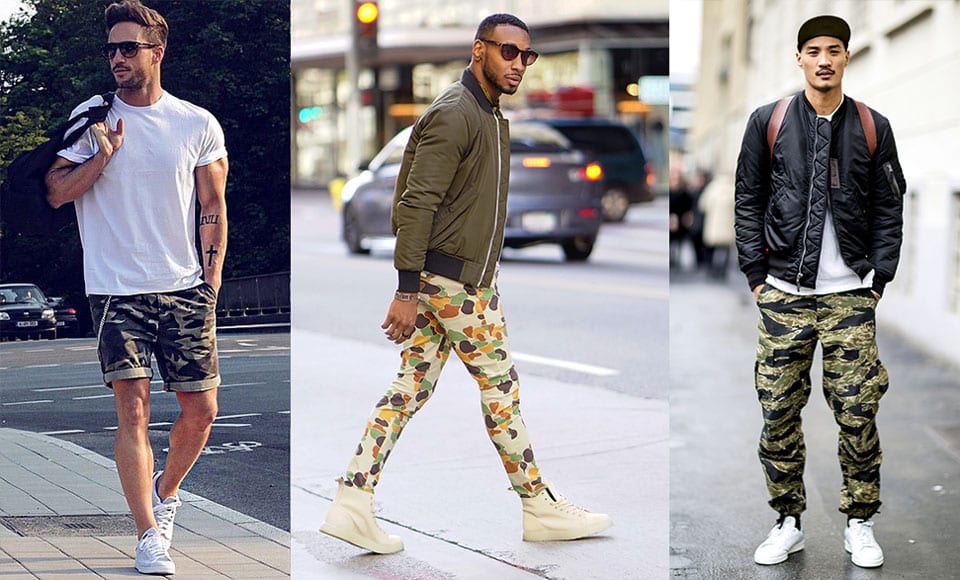The fashion that is worn by the military is grounded on uniformity and practicality. From combat boots to camouflage cargo pants, every piece that a soldier wears attends a purpose. You might be really wondering how come soldier lifestyle got anything to do with the fashion. But believe me, their lifestyle and uniform influenced the fashion industry.

Over time, the military-style has offered the fashion industry-unique concepts and practical inspiration to battle on the runway. At the same time, the response to war prevalently came through in style, like in presenting one’s delicate nature through hippie fashion after World War II.
Today, at the same moment the military might have been shaping national identities, building borders, and defending ways of life, it’s also been developing our silhouettes, influencing our wardrobes, and taking young brands and products to the front lines of fashion.
Well, war’s contributions to each one’s wardrobe are too abundant for a definitive list — combat boots, pea coats, bomber jackets, badges, and raglan sleeves, anybody? But here are some highlights.
The Khaki Field Watch Collection
The wristwatches from the old-style company Hamilton express an accurate tale of time with their khaki-inspired watch collection. Their robust and sporty Khaki Field collection ages back to 1910 – a moment in which the timepiece maker started to arm the American Army with accurate watches.
The Khaki Field collection is a highly adaptable and multipurpose line of wristwatches that are offered in plentiful variations, reflecting the brave and upright spirit that soldiers have.
The Camouflage Pattern
The brown and green blotches that portray traditional military camouflage have their ancestries in the outlines set by the French military in 1915.
When people talk about the military, they often think of camouflage. There’s no hesitation that this pattern has penetrated trends everywhere.
Camouflage was created so that militaries would blend in with their environment, but in the world of fashion, anyone could stand out.
The Ray-Ban Aviators
Every stunning outfit needs suitable accessories, and people naturally look for a beautiful pair of shades to top off their great look. Insert aviators. These glasses were primarily worn by Air Force pilots to block off shining sunlight. Interestingly, over time, they were popularized and disseminated by the likes of Tom Ford and his generations.
Now, Aviator sunglasses have permitted many individuals to fly high-in style. One can see roadside shops selling shades in most of the Asian countries. People really love to buy one and wear it while driving to their workplace/home.
The Bomber Jackets and Flight Jackets
The Flight Jacket has the most extensive history of any military clothing debatably. The jacket was created from a kind of sheepskin, which is branded as a capeskin and highlighted with a button front, a ribbed worsted wool hem and collar, front patch pockets with button pads, and a cotton sateen outline.
With so many varieties of the Flight Jacket, created for distinct seasons and changing details, it’s likely to see how it has become so pervasive throughout civilian and military society.
Since the ’80s, the admiration of the Flight Jacket has blasted as it has developed as a go-to garment for streetwear brands, hip-hop artists, fast-fashion companies, high-end designers, and everybody in-between.
The Pea Coat
A winter beloved in almost every country, the pea coat had humble early stages. Pea coat got its term from “pije,” a Dutch word that references the kind of cloth used for the clothing. The dark blue material was a rather coarse and rough type of twill.
In the 16th century, numerous Dutch Navy sailors carried these pea coats to keep them dry and warm while they were on the ship deck. Not only by sailors but mostly by people from winter areas.
Now, the coat is often cut from several forms of wool. Wool’s weight and heaviness are contingent on the climate. Though, irrespective of the weather, the blue color stays to be a constant trademark.
The Dog Tags
Dog tags were primarily worn as a system of identification for military members. However, their purpose has since changed. Today, it is common to see individuals who sport them as ordinary necklaces. One can find them easily in most of the fashion shops in the shopping malls. College students found it cool enough to have one on their necks.
Final Thoughts
Fashion has always advocated self-expression and individualism. In contrast, the military has dedicated itself to consistency and uniformity.
Yes, it’s hard to envision two different ends of the spectrum: military and fashion. Yet, many fragments of today’s clothing are dragged straight from the battlefields. Meaning, in the face of distinct aesthetics, military-wear has had a reflective inspiration and influence on wardrobes all over the place, and it remains to stir new trends even today.